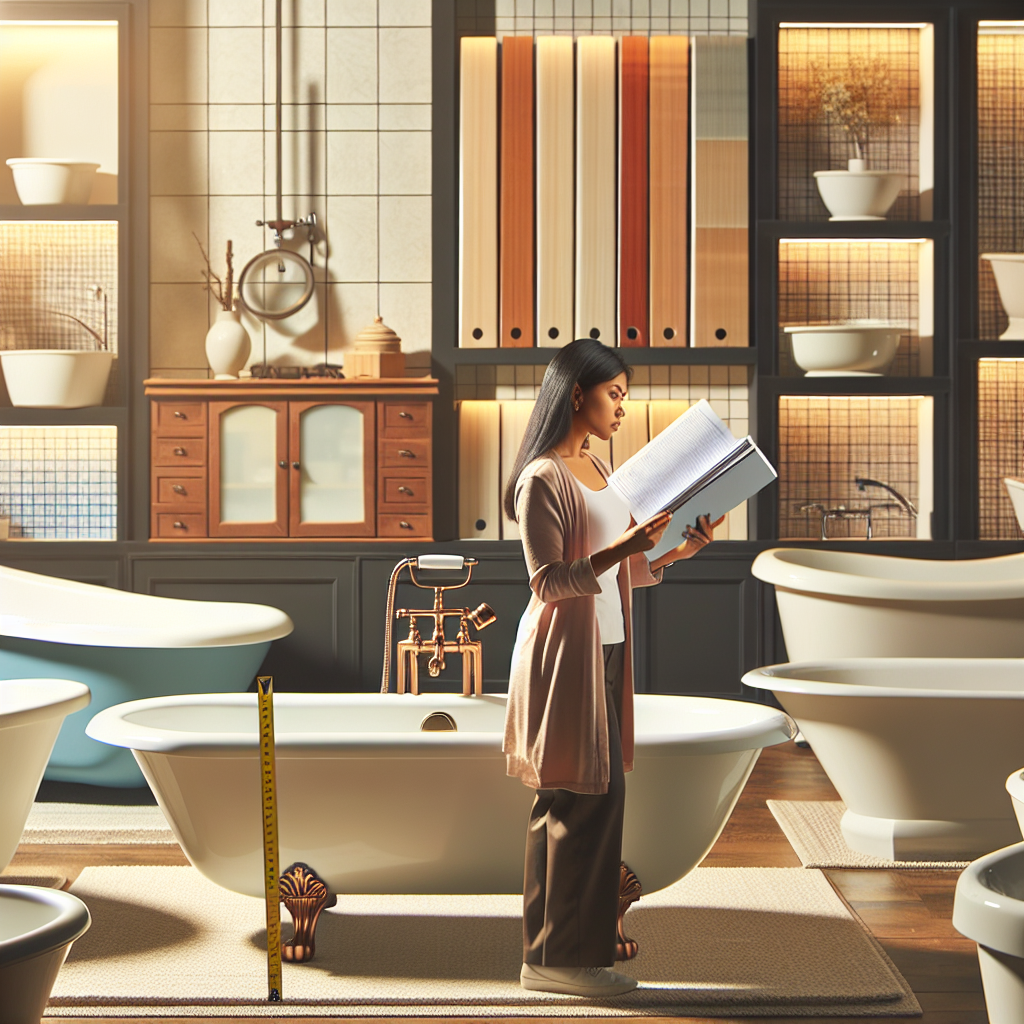When it comes to creating a serene and relaxing bathroom oasis, the bathtub is often the centerpiece. Choosing the right bathtub involves several considerations, from size and style to material and functionality. This comprehensive guide will help you navigate the world of bathtubs to find the perfect fit for your space.
1. Assess Your Space
Before diving into styles and materials, take a step back and assess your bathroom space. Here’s how:
Measure Your Bathroom
Begin by measuring your bathroom’s dimensions. Account for existing fixtures, doorways, and windows. Be sure to consider the following:
- Length and Width: Make sure you know how much space you have to work with.
- Height Considerations: Check if there are any overhead fixtures or windows that might limit your choices.
Consider the Layout
Think about your bathroom layout and how the bathtub will fit into it. Will it stand alone, be built into a corner, or perhaps be part of a shower-tub combo? The layout will greatly influence your decision-making process.
2. Choose the Right Style
Bathtubs come in various styles, each with its own charm and functionality. Here are some popular styles to consider:
Freestanding Bathtubs
Freestanding tubs are known for their luxury and elegance. They can be placed anywhere in the bathroom and often serve as a focal point. Perfect for spacious bathrooms, these tubs allow for creativity in design.
Alcove Bathtubs
Alcove tubs are designed to fit into a three-wall enclosure. They’re a great option for smaller bathrooms and are commonly used in combination with showers. This style maximizes space while still providing a relaxing bathing experience.
Corner Bathtubs
If you have a uniquely shaped bathroom, a corner bathtub is an excellent choice. These tubs let you utilize corner space effectively and can offer a cozy, intimate feel.
Drop-In and Undermount Bathtubs
These types of tubs can be recessed into a platform or countertop, giving a seamless appearance. They’re popular in modern bathrooms and allow for customized designs.
3. Select the Right Material
Bathtubs come in various materials, each with its own benefits. Making a choice here may depend on your budget, desired aesthetics, and maintenance preferences.
Acrylic
Acrylic bathtubs are lightweight, durable, and resistant to stains. They come in various shapes and sizes and retain heat well, making bath time a cozy experience.
Cast Iron
For a classic and timeless look, cast iron remains a top choice. While more heavyweight, these tubs are incredibly durable and retain heat exceptionally well, providing you with a long-lasting bathing experience.
Fiberglass
Fiberglass tub options typically come at a lower price point and are easier to install. However, they may not hold up as well over time compared to acrylic or cast iron options.
Stone and Composite Materials
Luxury stone bathtubs, such as those made from marble or granite, offer a unique aesthetic. However, they can be heavy, more expensive, and may require additional maintenance.
4. Functionality and Features
Modern bathtubs come with a plethora of features designed to enhance your bathing experience. Consider what functionalities you’d like to have:
Spa-Jet Options
If relaxation is your goal, consider a bathtub with hydrotherapy options. Spa-jets can provide a soothing massage experience and enhance your overall wellness.
Accessibility Features
If you require accessibility options, look for tubs designed for easy entry and exit, such as walk-in bathtubs. These options offer safety features without sacrificing style.
Integrated Shelving or Lighting
Some tubs come with integrated storage or lighting options. This feature can add aesthetic appeal while remaining functional in your bathroom layout.
5. Color and Finish
Your bathtub’s color and finish should harmonize with your bathroom’s overall design aesthetic. Whether you opt for classic white, a deep matte black, or a striking color, ensure it complements other elements like tile, sinks, and fixtures.
6. Budgeting Your Bathtub
Once you’ve narrowed down your choices based on space, style, and features, it’s time to set a budget. Consider the following:
Installation Costs
Do not forget to factor in installation costs, which can vary greatly depending on the complexity of the project. If you’re not planning to DIY, getting quotes from multiple plumbers or contractors can save you money.
Ongoing Maintenance
Certain materials may require special maintenance products, impacting long-term costs. Research the maintenance needs of your preferred options.
7. Test Before You Buy
If possible, visit showrooms to see the tubs in person. This allows you to gauge size, comfort, and material quality firsthand. You can also sit in various styles to see how they feel.
Conclusion
Choosing the perfect bathtub for your space can be a transformative process. By carefully considering dimensions, styles, materials, and features, you can find a tub that not only meets your functional needs but also enhances your bathroom’s aesthetic. Happy tub hunting—you deserve a serene bathing experience!


